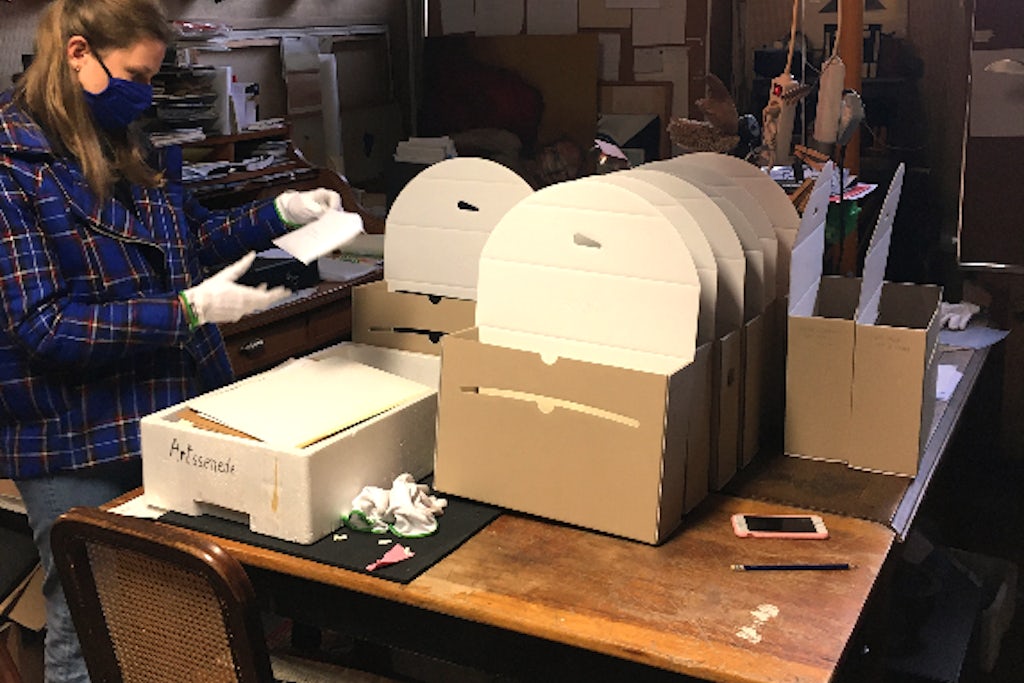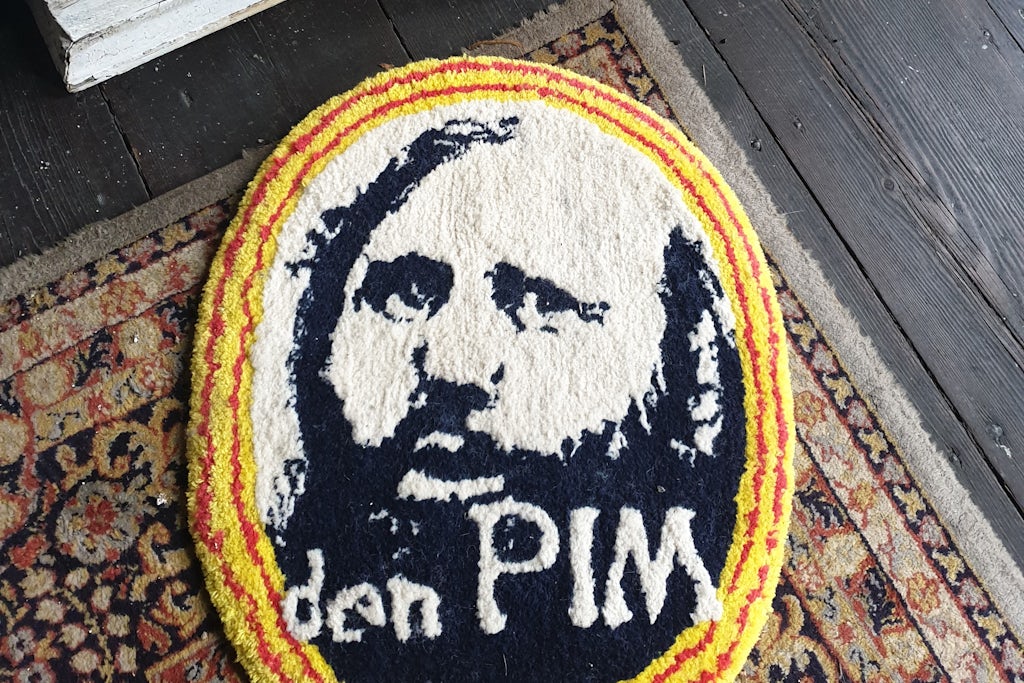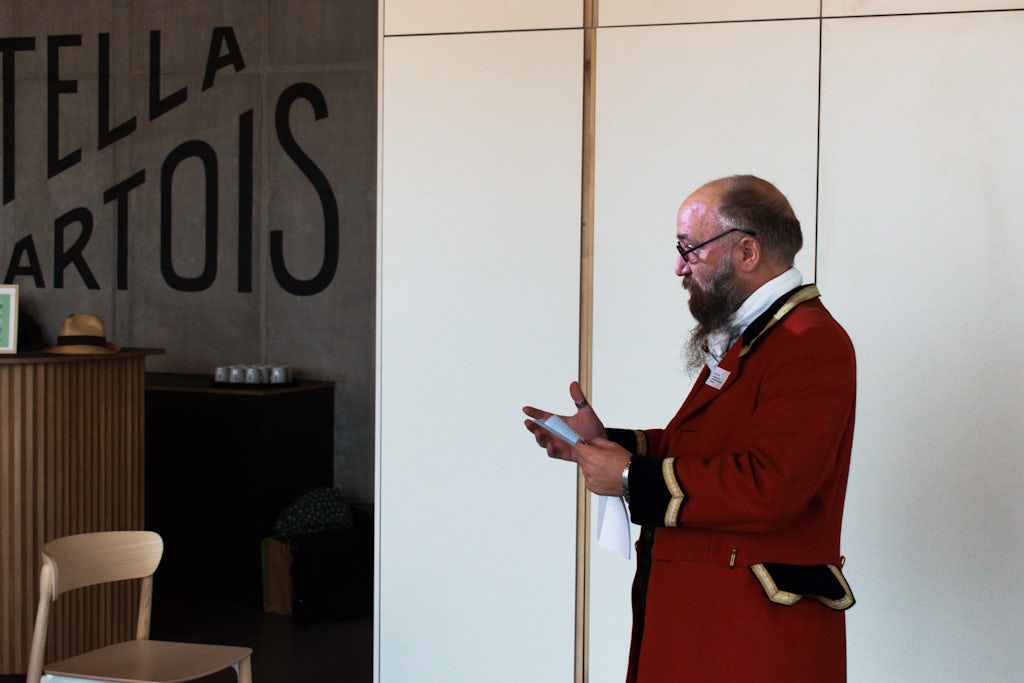Transfer: the Jozef Van Ruyssevelt photo archive
The estate of artist Jozef Van Ruyssevelt (born in Bazel [Kruibeke] in 1941 and died prematurely in 1985) has been meticulously managed by his widow, May Suykerbuyk, for years.
Van Ruyssevelt studied painting and printmaking at the Royal Academy of Fine Arts Antwerp. He studied under Antoon Marstboom, René De Coninck, and Jos Hendrickx, and he began teaching etching himself at the Academy in 1971. Van Ruyssevelt also exhibited his works in Belgium and abroad. The artist spent the last 20 years of his life living and working in Essen, in the home May still resides in today and where she also keeps his estate. This estate also includes a plethora of objects from his studio. Van Ruyssevelt had already begun documenting his oeuvre and the works he had sold during his lifetime. May continues that work, completing his artwork specification sheets with care.
The legacy is also actively promoted in publications and at exhibitions. For example, the Jakob Smits Museum in Mol exhibited his works as recently as 2020.
In recent years, there has been an ongoing quest to find permanent ‘homes’ for his oeuvre (paintings, sketchbooks and etchings). Among others, his works are currently being housed in KMSKA, the Museum Plantin-Moretus, the Flemish Community and the Belgian State Collection, the Fondation Custodia in Paris, and Amsterdam’s Rijksmuseum. The personal archive, which mainly contains correspondence, was donated to the Letterenhuis. 200 slides on art, which Van Ruyssevelt used for educational purposes, came to reside in the KMSKA.

Some impressions of the estate – artwork spec sheets, left bottom

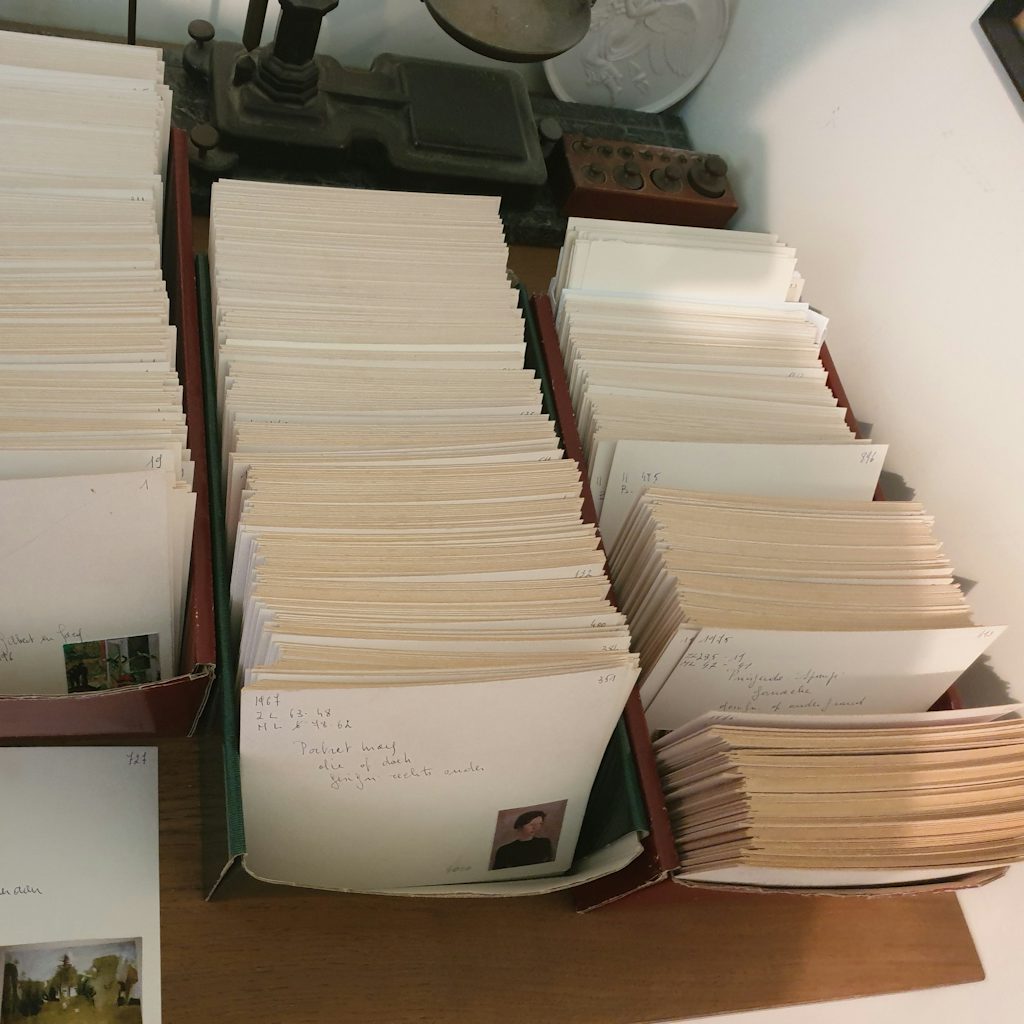

Van Ruyssevelt also compiled a photo archive of around 1,000 photographs between 1972 and 1985. May approached the CKV to find a new location for them. We identified the Bibliotheca Wasiana (City of Sint-Niklaas) as a suitable repository, which only seemed appropriate given Van Ruyssevelt’s Waasland roots.
Throughout his oeuvre, Van Ruyssevelt experimented with contrasts between dark and light, even in the black-and-white photos he shot and developed himself. He made images of objects and elements from his immediate surroundings, as well as landscapes and travel photographs. These comprised an essential part of his creative process as an artist and directly influenced his painted and drawn oeuvre, down to the way he framed those depictions. The series of photographs of Donnet Castle in Kalmthout, on which he based several gouaches, is just one such example.
For Van Ruyssevelt, photographs were a kind of sketchbook, while for the observer, they are aids for understanding his work. They provide greater insight into how scenes were formed and the play of dark and light.
Given that City Museum SteM and the Bibliotheca are already home to several of the artist’s works, publications, and a documentation folder by/about him, the photo archive makes a lovely, valuable addition to that collection. And in this context, the photographs will be shown in their best light. The labels May put on the boxes already go a long way towards facilitating the inventory.
Would you like to catch a glimpse? A small selection of his photographic work can be seen on the website dedicated to Van Ruyssevelt on http://www.jozefvanruyssevelt.be/work.php?id=10
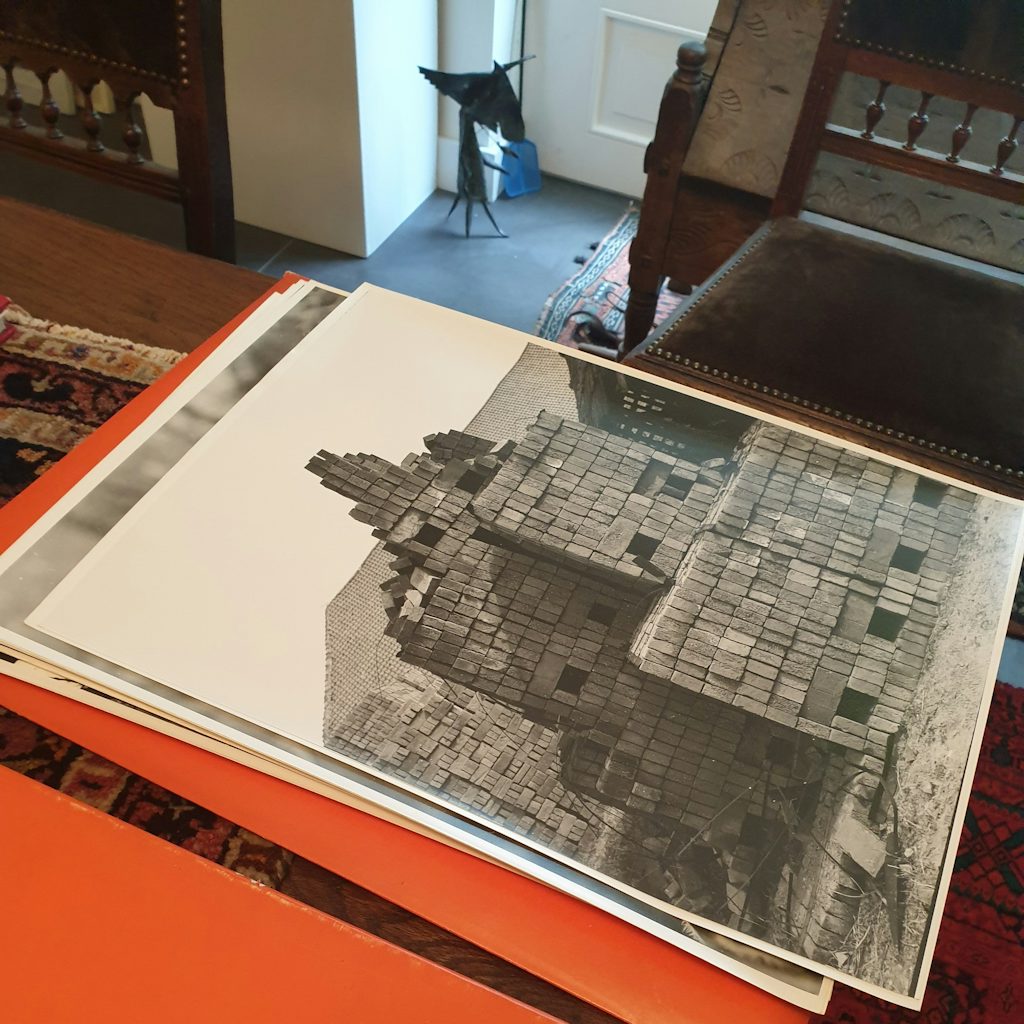
The original orange folders with some of the photographs on it

